Table of contents
The brown seeds of the common flax ( Linum usitatissimum ) are called linseed and the yellow seeds are called golden linseed ( golden linseed ).
Use in the kitchen:
What does linseed taste like? Fortunately, linseed quickly stops tasting like it smells - depending on how it's stored, it can be rather unpleasant. If you eat the seeds as they are, they have a nutty, perhaps slightly oily aroma. However, the seeds are so rich in essential omega-3 fatty acid (alpha-linolenic acid, or ALA) that you should never buy or keep them crushed, ground or opened in any other form. This is because this healthy fatty acid, which is extremely important for us, quickly takes on a rancid taste and the ingredients quickly lose their beneficial effects.
Flaxseeds are known as brown or golden-yellow, flat seeds. Gold flaxseeds taste a little milder because they contain less of the particularly healthy ALA, or omega-3 fatty acid (51% instead of 59% for brown flaxseeds). However, yellow seeds have a little more inflammatory omega-6 fatty acids and protein. We already eat too much of these two ingredients. However, since yellow flaxseed is grown in the USA, especially in North Dakota and South Dakota, and the main supplier, Canada, grows mainly brown flaxseeds, yellow flaxseeds are sold as more valuable or healthier - although the opposite is actually the case. Brown flaxseeds have a stronger antioxidant effect than yellow. Studies between 2001 and 2016 show different results, so each supplier can pick what they want. But the differences are relatively small, so it doesn't really matter. 1,16,17,18
Despite their nutty taste, flaxseeds are consumed primarily for health reasons. They can be added as a small addition to virtually any dish. However, flaxseeds are also considered a "functional food": The scientific study cited examines nutrients, anti-nutrients, functional properties, processing, metabolism and health benefits of bioactive molecules, namely essential fatty acids, lignans and fiber from flaxseeds. 19
Flaxseeds are a popular cereal ingredient and are often found in baked goods such as bread or rolls . When ground into flaxseed flour, they can partially replace other flours. Crackers , wraps, pancakes and even pizza dough can be made from flaxseed meal.
In a vegan diet, ground flax seeds are a welcome egg substitute as a binding agent. To do this, mix the seeds with three parts water . Flax seeds make a healthy topping for soups or smoothies. If you let them germinate for a few days, the sprouts make a varied, raw salad ingredient.
How should you take linseed correctly? Linseed has proven to be a useful home remedy for gastrointestinal diseases. To do this, pour (hot) water over linseed and eat the resulting porridge several times a day. As a digestive aid, linseed is best left whole so that it acts as fiber - and yet releases some of the mucilage beforehand. However, when crushed or ground, the body can absorb the healthy ingredients such as omega-3 better.
Due to the small amounts of naturally occurring hydrogen cyanide and the heavy metal cadmium, only relatively small portions of linseed should be consumed daily. Heating reduces the hydrogen cyanide content in the linseed. Higher temperatures partially destroy the enzyme (ß-glucosidase) that is used to activate the cyanogenic glycosides to form hydrogen cyanide salts. Since linseed swells up a lot, it is important to ensure that you drink enough fluids. 2
The tender, soft, slightly bitter-tasting leaves and shoots of the common flax are used raw: for salads, herb mixtures or vegetable fillings. 3
Vegan recipe for low-carb pizza with linseed:
For a baking tray, first soak 15 g chia seeds in 150 ml warm water for 30 minutes. Mix the resulting chia gel together with 100 g crushed linseed, 50 g coconut flour and 50 ml water and season with salt and oregano . Allow the mixture to soak for a further 15 minutes. Then spread it on a baking tray lined with baking paper and bake for 12 minutes in a preheated oven at 180 °C top and bottom heat. Top the pizza base as desired and bake for a further 10 minutes. Season with pepper and herbs. Do not use higher temperatures due to the formation of trans fats!
Vegan recipe for salad with linseed sprouts:
Germinate 2 tablespoons of linseed in a sprouting jar for about 3 days and rinse regularly. Cut a spring onion into fine rings, quarter 100 g of cherry tomatoes and place in a bowl together with the flesh of an avocado . Add 150 g of cooked black beans . For the dressing, mix 2 tablespoons of linseed oil with the same amount of lemon juice and 1 teaspoon of mustard . Season with salt andpepper and fresh basil and spread over the salad. Garnish the finished salad with the sprouts and enjoy fresh.
Recipe for linseed tea:
To make linseed tea, pour 2 heaped teaspoons of whole linseeds into 250 ml of cold water and let it steep for 20 minutes. Stir occasionally to ensure that the linseeds can swell properly. After the steeping time, strain the grounds and drink the linseed tea slightly warm.
Flax seeds are a component of the gluten-free and raw vegan Erb-Müesli . In addition to vitamin C-rich citrus fruits and antioxidant-rich berries, it also contains pseudocereals, seeds and golden millet . Try the Erb-Müesli plus oat flakes variant!
| Not only vegans or vegetarians should read this: Vegans often eat unhealthily. Avoidable nutritional mistakes . |
Shopping - where to buy?
Linseed can be bought at most well-stocked supermarkets such as Coop , Migros , Rewe or Edeka . The usual packaging unit is 500 g. You can often choose between whole and ground linseed (if you prefer whole linseed, see above in the chapter "Use in the kitchen"). At Volg , Aldi , Lidl , Denner and Hofer , linseed is usually not part of the permanent range, at Spar you can usually find it in larger Interspar branches. Gold linseed is not yet standard in supermarkets. It can be bought mainly in health food stores, drugstores, smaller organic shops and in organic supermarkets such as Denns or Alnatura .
The linseed harvest takes place in August and September, but linseed is in season in stores all year round . For a residue-free product, we recommend buying organic linseed from controlled organic cultivation. For ecological reasons, regional cultivation is important.
Found in the wild:
Flax is usually cultivated and rarely grows wild. 3 It is an annual, upright plant, 80-120 cm tall, with narrow, grey-green leaves up to 2.5 cm long. Round seed capsules develop from the sky-blue, sometimes white, plate-shaped summer flowers. 4 The main flowering period for flax is from June to August. 3
In addition to the seeds, young leaves and shoots of the plant are also used in the kitchen. These can be harvested from April to June. 3 When collecting different parts of the flax plant, there is no particular risk of confusion with similar-looking poisonous plants. Nevertheless, it is generally advisable to familiarize yourself in detail with the relevant plant portrait before collecting wild plants.
Storage:
Flaxseed should be stored in a dry, dark place. Crushed flaxseed in particular does not last long. These should be used up after six months at the latest. In the supermarket, crushed flaxseed is often treated with a protective gas and vacuum-packed. At home, it is best to take them out of the plastic packaging and put them in a dark, airtight container. If possible, you should only buy whole flaxseed and grind them fresh yourself if necessary. Whole, dried flaxseed can be kept for up to a year. You can generally tell whether the seeds are still fresh by the fact that they taste nutty and not bitter or rancid. The refrigerator is not suitable as a storage location due to the high humidity.
Ingredients - nutritional value - calories:
100 g of flaxseed contains 23 g of omega-3 fatty acids (alpha-linolenic acid, ALA) , which cover 1,141% of a woman's daily requirement (at 2,000 kcal). 10 g is therefore enough as a daily amount and provides more than 100% of the daily requirement of omega-3 fatty acids. Flaxseed has the highest content of this essential fatty acid, followed by chia seeds (89.2% of daily requirement per 10 g) or perilla, walnuts or tree nuts (45.4%) and unpeeled hemp seeds (43.4%). 5.6
With 27 g per 100 g, flax seeds are rich in fiber (hemicellulose, cellulose, lignin) and thus contribute to a fiber-rich diet. Flax seeds also contain a particularly high proportion of lignans, which are hormone-active phytoestrogens. 5 Flax seeds are the richest source of lignans in the plant world (up to 0.7-1.5% of the dry weight of the seed). It is mainly the antioxidant "secoisolariciresinol diglucoside" (SDG). 20
Do linseeds contain hydrogen cyanide? As a naturally occurring plant ingredient, linseeds contain cyanogenic glycosides. The enzyme ß-glucosidase, which is also found in linseeds, releases cyanide when consumed (cyanides are the salts of hydrogen cyanide). However, even with high cyanide levels, consuming linseeds is harmless to health as long as the usual consumption recommendation of a maximum of 15 g of linseeds per meal is observed . 2
Oilseeds such as linseed can absorb significant amounts of cadmium from the soil. Levels of over 1 mg/kg of cadmium are not uncommon. According to the recommendation of the Federal Institute for Risk Assessment, one should therefore not eat more than 20 g of linseed per day . Scientific studies even confirm that consuming 50 g of linseed per day had no adverse effects on humans. 20
The following micronutrients are found in abundance in linseed and cover the following daily requirement in 10 g: magnesium 10.5%, manganese 12.4%, copper 12.2%, tryptophan (essential amino acid) 12.0% and thiamine (vitamin B1) 14.9%. 6 A comprehensive overview of the nutritional values of linseed can be found in the tables below. 6
Other substances besides mucilage are lignans, linamarin, lecithin, sterols and plastochromanol etc. More generally, vitamins B 1 , B 2 , B 6 and E as well as nicotinic acid, folic acid and pantothenic acid are mentioned. Due to the compressed nutrient density and the health-promoting properties of linseed, European linseed could almost be described as a domestic superfood. However, the term superfood is primarily used for marketing purposes and is therefore no guarantee of a particularly healthy food.
Flax seeds contain 35-45% oil, of which 9-10% are saturated fatty acids (palmitic and stearic acids), about 20% are monounsaturated fatty acids (mainly oleic acid) and more than 70% are alpha-linolenic acid. Proteins of flax seeds are limited by lysine, but are characterized by a high digestibility coefficient (89.6%) and a high biological value (77.4%). 20
Health aspects - effects:
The polyunsaturated omega-3 fatty acids are starting substances for structural lipids of cell membranes and for tissue messengers. 5 The health-promoting ratio between omega-6 fatty acids (linoleic acid, LA) and omega-3 fatty acids is a maximum of 5:1. Since linseed contains a particularly high amount of omega-3, the ratio is almost the opposite here at 1:4. This makes linseed an excellent source of omega-3 fatty acids, from which a healthy body can produce anti-inflammatory eicosapentaenoic acid (EPA) and docosahexaenoic acid (DHA) with a low intake of omega-6 fatty acids. 7 Only chia seeds come close to this value at 1:3. Otherwise, practically all foods have more inflammatory omega-6 fatty acids than omega-3 and the higher number is therefore in front of the colon. Caution: You should also eat less than 15 g of chia seeds per day because they thin the blood.
The water-soluble fiber in linseeds is mucus-forming and swellable, allowing food to pass through the intestines more easily. Studies show that whole or slightly broken linseeds are better suited for this purpose than ground ones. Due to the good swelling ability, increased fluid intake is a prerequisite for the positive properties of linseeds. 5
Numerous studies indicate that lignans can have a preventive effect on hormone-dependent cancers such as breast or prostate cancer. However, it is still unclear how high the concentration of lignans must be for this to happen and whether phytoestrogens might even promote cancer growth. The positive effect may be due to the combination of lignans with omega-3 fatty acids. 5
Flaxseeds have a laxative, expectorant, pain-relieving effect and can soothe irritated tissue. 10 The mucilage contained in flaxseeds has a positive effect on all inflammatory processes in the gastrointestinal tract, but also on the treatment of respiratory diseases. 3
Dangers - Intolerances - Side effects:
Flaxseed can affect the absorption of medicines through the intestines. Therefore, there should be a time gap of at least two to three hours between eating flaxseed and taking medicines. 8
In contrast to linseed oil, which can increase the risk of premature birth, linseed in the above-mentioned dosage is not a problem for pregnant women. As fillers and swelling agents, they can help regulate a sluggish bowel. If you are constipated during pregnancy, you should seek advice from a specialist. 8,9
While small amounts of hydrogen cyanide stimulate breathing and aid digestion, ingesting a sufficiently high dose can lead to acute poisoning (by blocking energy production). In the worst case, an overdose can lead to respiratory insufficiency (respiratory failure) and death. However, the recommended maximum daily dose of flaxseed does not pose any health risk. 2,4
Use as a medicinal plant:
What is (are) linseed good for? When taken internally, the highly swellable and mucous-forming linseed has a stool-regulating effect. In the intestine, the intestinal contents increase and stretching stimuli and movement sequences (peristalsis) increase. Overall, linseed can increase intestinal activity and help with chronic constipation. 4
In case of diverticulitis (inflamed protrusions of the large intestine), the flax seeds should be finely ground and mixed with cereal flakes and plenty of liquid.
Flaxseed mucus protects the mucous membranes and can provide relief from gastritis, pharyngitis, chronic bronchial complaints, coughs and sore throats. As a dietary supplement, flaxseed is suitable for menstrual cramps, arteriosclerosis, eczema and rheumatoid arthritis ( linseed oil ). 4
For external use, soak freshly ground linseed in cold water and stir to form a smooth paste. Bring the paste to the boil while stirring constantly and then spread it out on a cloth and apply it to the area to be treated while it is still as hot as possible. For better effectiveness and to retain heat, the compress can be covered with a woollen cloth. 10
Poultices can help with side stitches, colic, muscle pain, bruises , bronchitis, pleurisy, sore throats, burns, boils and ulcers. The poultice, mixed with white mustard ( Sinapis alba ), is suitable for relieving chest pains or, mixed with honey and lemon , as a cough remedy. 4
Folk medicine - natural medicine:
The first written mention of linseed is in the writings of Hippocrates around 500 BC against catarrh, stomach pain and diarrhea. Paracelsus also mentions the mucus of linseed as an anti-irritant cough medicine. 10 In the 8th century, Emperor Charlemagne introduced the consumption of linseed for general public health. 4
Occurrence - Origin:
Common flax, Linum usitatissimum , is an ancient cultivated form of Linum bienne , a biennial wild flax native to the Mediterranean region. This species was cultivated in Mesopotamia from 7,500 BC. According to Wikipedia , common flax probably originated in Mesopotamia or Egypt. 11 Flax grows in the temperate and subtropical regions of both hemispheres. 12
There are two easily distinguishable species of Linum usitatissimum : the tall, sparsely branched, flower-poor fiber or web, which is used to produce flax or linen, and the smaller oil flax, which bears more flowers and fruits and is grown for oil production and as a fodder plant. 4
Cultivation in the garden:
Which type of flax you plant in the garden depends on the desired use.
Flax plants generally like it warmer and are sensitive to frost. A sheltered location with well-drained, dry soil and a low nitrogen concentration is ideal. Depending on the weather, sowing takes place at the end of March to the beginning of April on areas where flax has not been grown for at least four years. Otherwise there is a risk of fungus forming in the soil, which causes the young plants to rot. As a so-called long-day plant, flax needs a lot of light and grows particularly quickly in May and June. Oil flax requires no fertilizer and only a sparse supply of water. 110-120 days after sowing, the plants can be harvested by pulling them out of the ground by hand, roots and all. Ideally, flax should be harvested a week before the seeds are fully ripe. 13
Cultivation - Harvest:
When growing flax, it is important to have a preceding crop that leaves few weeds. Seed oats are considered the best preceding crop. In France and Belgium, flax is often grown after maize. A low plant density promotes seed formation, while a high plant density promotes fiber formation.
The main cultivation area for oil flax is North America and the main cultivation country is Canada. Between 1996 and 2005, the annual, considerably fluctuating harvest quantities (linseed) were between 517,000 and 1,082,000 tons. According to the FAO, the world harvest in 2006 was 2,569,793 tons. 11
In Germany, the harvest of oil flax from 7,100 hectares of cultivated land is negligible (2010). In comparison, cultivation in Germany in 1875 was still 215,000 hectares. 5
Animal protection - species protection - animal welfare:
Flax plants bear numerous flowers, but these only have low pollen and nectar values. This makes flax less interesting as a bee pasture. 14
General information:
Linseed ( Linum ) or flax is a genus of plants in the family Linaceae with around 200 species. 12 The seeds of the common flax ( Linum usitatissimum ) are called linseed. 15 Linola (brand) with yellow seeds is a special variety with only 2% ALA to ensure a long shelf life - for long-lasting "linseed oil" ( without the important values! ) and for animal feed. 15b
Alternative names:
Alternative names for linseed or the linseed plant are seed linseed, linseed, oil linseed, true linseed, common linseed, cultivated linseed, flax, linseed and fiber linseed. Yellow linseed is called golden linseed or golden linseed.
In English, the name of linseed is flaxseed, linseed or flax seed.
Literature - Sources:
Bibliography - 15 Sources
| 1. | bfr.bund.de (Bundesinstitut für Risikobewertung). Verbrauchertipps zur Verringerung der Aufnahme unerwünschter Stoffe über Lebensmittel. PDF. |
| 2. | bfr.bund.de (Bundesinstitut für Risikobewertung). Neue Daten aus BfR-Humanstudie: Kein Cyanid-Risiko bei Verzehr von Marzipan und Persipan. PDF. |
| 3. | Fleischhauer, Steffen Guido; Guthmann, Jürgen; Spiegelberger, Roland. Essbare Wildpflanzen. 200 Arten bestimmen und verwenden. 3. Auflage. Augsburg; 2013. Verlagsgruppe Weltbild GmbH. |
| 4. | Bown, D. Kräuter. Die grosse Enzyklopädie. Anbau und Verwendung. 2. Auflage. München; 2015. Dorling Kindersly. |
| 5. | ugb.de (Unabhängige Gesundheitsberatung). Leinsamen. |
| 6. | USDA (Landwirtschaftsministerium der USA). Nährstofftabellen. Leinsamen. |
| 7. | Biesalski, Hans Konrad; Grimm, Peter; Nowitzki-Grimm, Susanne. Taschenatlas Ernährung. 6. Auflage. Stuttgart; 2015. Georg Thieme Verlag. |
| 8. | apotheken-umschau.de Heilpflanzen-Lexikon: Leinsamen. |
| 9. | Janet C. L. Tou, Jianmin Chen, Lilian U. Thompson: Flaxseed and Its Lignan Precursor, Secoisolariciresinol Diglycoside, Affect Pregnancy Outcome and Reproductive Development in Rats. In: The Journal of Nutrition. Band 128, Nr. 11, November 1998, S. 1861–1868, PMID 9808635. |
| 10. | Niederegger, Oswald; Mayr, Christoph. Heilpflanzen der Alpen. Gesundheit aus der Natur von A bis Z. Innsbruck; 2006. Tyrolia-Verlag. |
| 11. | wikipedia.org Gemeiner Lein. |
| 12. | wikipedia.org Lein. |
| 13. | garten-journal.net Flachs oder Lein anbauen – Was ist zu beachten? |
| 14. | hortipendium.de Bienenweiden. |
| 15. | wikipedia.org Leinsamen. |

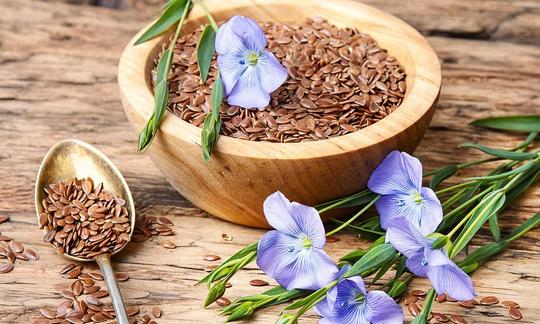

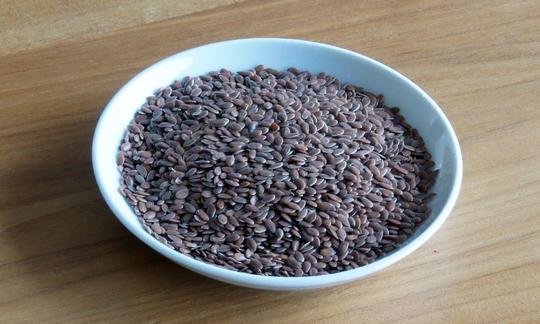

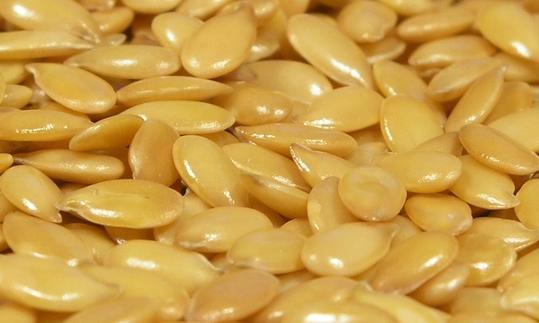

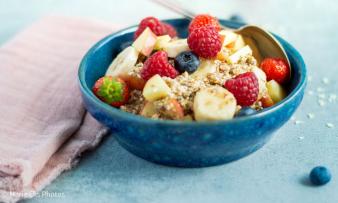
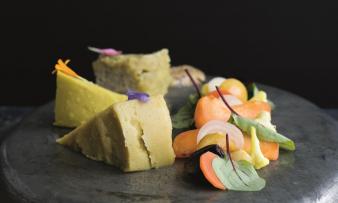
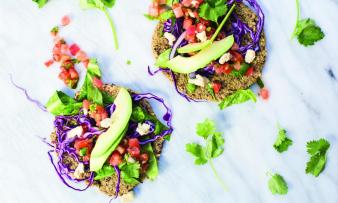
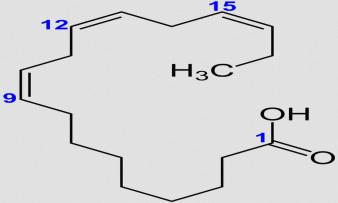
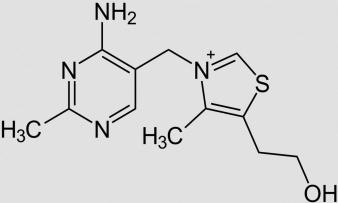



Comments